It has been a double whammy for the American war effort in the Afpak region: not only have the Americans been made to eat humble pie and ‘apologise’ to the Pakistanis for the helicopter attack on a Frontier Corps (FC) border post in Kurram agency, they have also had to suffer an ill-disguised blockade by the Pakistan army of NATO logistic supply lines that run through Pakistan. Worse, the NATO supply convoys have come under fierce attacks inside Pakistan with over a 100 oil tankers having been burnt in different parts of Pakistan in the last one week since the blockade of the supply lines began. While NATO supply containers have been routinely coming under attack inside Pakistan for quite some time now, and looted supplies have been openly sold in the markets of Peshawar and Quetta, the attacks on NATO oil tankers last week indicate that something far more sinister is behind these attacks, which have until now been conveniently placed at the doorstep of the Islamist militants.
A closer look at the recent spate of attacks on NATO supplies suggests that the decade long double-game being played by the Military-Militant Alliance (MMA) in the war on terror is finally coming out in the open. And if this is not the case, then it means that the Taliban network inside Pakistan is far more extensive and far more lethal than previously imagined. Until now, most analyses of the spread of the Taliban/Islamist network in Pakistan have marked out the tribal badlands straddling Afghanistan (FATA), the Khyber-Pakhtunkhwa province and South Punjab as the main problem areas. Even though Islamist groups are known to be present in Central and North Punjab (Lahore, Faisalabad, Chakwal, Rawalpindi, Attock) as well as in the Pashtun belt of Balochistan and in Karachi, their influence and operations in these areas have been either ignored or downplayed as not being significant enough to lose sleep over.
But if indeed the latest attacks on NATO convoys have been carried out by the Taliban or Islamist groups aligned with them, then it clearly means that the Taliban now have a pan-Pakistan footprint and have the ability and network to launch attacks in every part of Pakistan. Worse, the Islamist militias seem to be practically knocking on the door of the national capital, Islamabad. After all, if the Taliban are able to burn dozens of NATO oil tankers on the heavily guarded GT road and that too next door to the Pakistan army run Defence Housing Authority colony, then surely it is time for alarm bells to start ringing, just as they did when the Taliban captured Buner and came within 60 miles of Islamabad in 2009. Perhaps if the attack on NATO containers on Islamabad’s outskirts was an isolated incident, it could have been explained away. The problem is that NATO convoys have also been attacked in the past in the area surrounding Islamabad which is incidentally also the recruiting hub of the Pakistan army’s rank and file.
Equally worrisome is the impunity with which the so-called militants have burnt NATO tankers in places like Shikarpur in Sindh and in the Baloch dominated areas of Balochistan. There have so far been little or no reports of Taliban networks in rural Sindh. The Shikarpur attack therefore suggests that the Taliban have extended their tentacles into Sindh as well. As far as Balochistan is concerned, it is a well known fact that the provincial capital Quetta is the headquarter-in-exile of the Afghan Taliban leadership. But while the none-too-hidden activities of the Taliban Shura in Quetta offers a plausible explanation to the targeting of NATO convoys in and around Quetta and in the other Pashtun dominated regions of Balochistan, it beggars belief how they can launch spectacular attacks on NATO convoys in the presence of the oppressive security cordon put in place by the Pakistani security and intelligence agencies to keep Baloch freedom fighters at bay in and around Quetta.
Even more strange are the attacks by Taliban in Baloch populated areas like Mastung, Khuzdar and Kalat. These are areas where there is no known Taliban presence. Baloch nationalists and ordinary citizens in these areas are struggling to shake off the oppressive and repressive yoke of Pakistan army, which has placed an almost blanket security cover over the region. There are multiple checkpoints all along the highways which are manned by the military and FC. Under these conditions how could dozens of Islamic militants riding on motor-cycles or in double-cabin SUVs come out of nowhere, burn down a score or more of trucks and then disappear into the thin air?
It is simply disingenuous to suggest that perhaps these attacks were staged by either criminal gangs or by Baloch freedom fighters. The latter have no problems with the West and have never expressed any intention of attacking NATO convoys. Harping on the possible involvement of the criminal gangs is also stretching the limits of credulity. At best, the criminal syndicates role in the attacks would be limited to buying the looted NATO supplies at a low price and then flogging these goods in the local markets. This only leaves the Pakistani security forces as the prime suspect in staging these attacks, either directly or through their jihadist ‘strategic assets’.
Clearly, the Pakistan army is bringing into play its main leverage over the US – the supply route – to go for broke in Afghanistan. For the moment, Pakistan appears to be succeeding, what with the Pentagon falling over backward to appease the Pakistani generals. At the same time, the Pakistanis are keeping wriggle room for themselves by resorting to the subterfuge of projecting the army chief, Gen. Ashfaq Kayani as a pro-US general who is under pressure from his more hard line colleagues to turn the squeeze on the Americans. This is exactly the tack that was adopted after the 26/11 attack when reports filed by a Pakistani journalist acknowledged that though the attack was originally planned by the ISI, it was hijacked by the Al Qaeda after Gen Ahmad Shuja Pasha junked the plan on taking command of the ISI.
Be that as it may, the blockade of NATO supplies and the targeting of NATO convoys is classical brinkmanship which should be quite familiar to anyone acquainted even remotely with the culture and mindset of the Punjabi dominated Pakistani military. Fortunately for the Pakistanis, the failure of the Americans to understand the nature and character of the Pakistani state and society has made them blink this time. Perhaps it is this lack of understanding of how Pakistan operates which is leading the Americans to mollycoddle the Pakistan army. Why else would the Pentagon provide the Pakistan army alibis by talking about elements within the ISI and Army who 'might be interacting with terrorist organisations in ways that aren't consistent with what the government and military are doing'? That this is happening despite the fact that the Pakistan army as an institution is hand in glove with the very Taliban who are killing US soldiers in Afghanistan is, to say the least, rather strange.
Unless the Americans wake up and smell the coffee, an ignominious defeat in Afghanistan is unavoidable. The first thing that the Americans need to do is call the Pakistani bluff. Alongside, the US needs to start applying pressure where it really hurts the Pakistanis – economically, diplomatically and militarily. Third, the US must re-evaluate its strategy in the Afpak region. Resolving to stay the course and persist with the current non-strategy, as US President Barack Obama has done recently, is only reinforcing failure. Finally, the US should be prepared to read the riot act to the Pakistanis and force compliance on them or else promise to make a ‘horrible example’ – to use Henry Kissinger’s evocative warning to Zulifikar Ali Bhutto – of Pakistan. This is imperative even if the US wants to save Pakistan from itself.
-------------------------------------------
Published Date : October 11, 2010

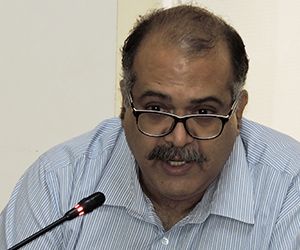
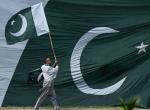


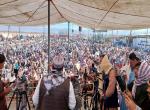
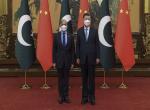
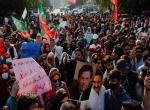
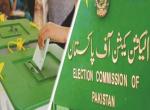
Post new comment